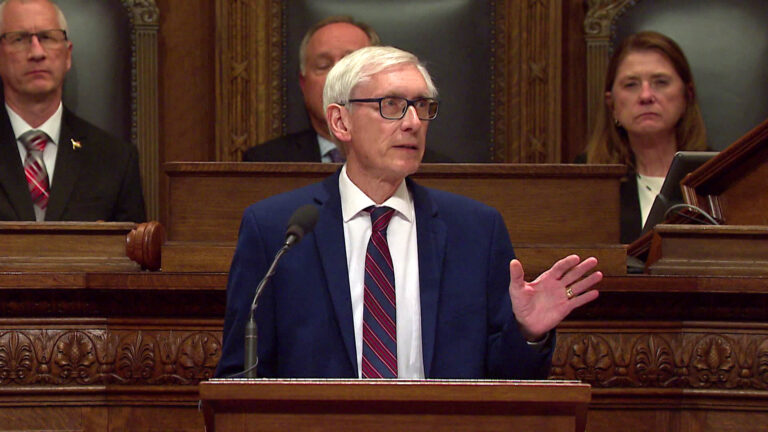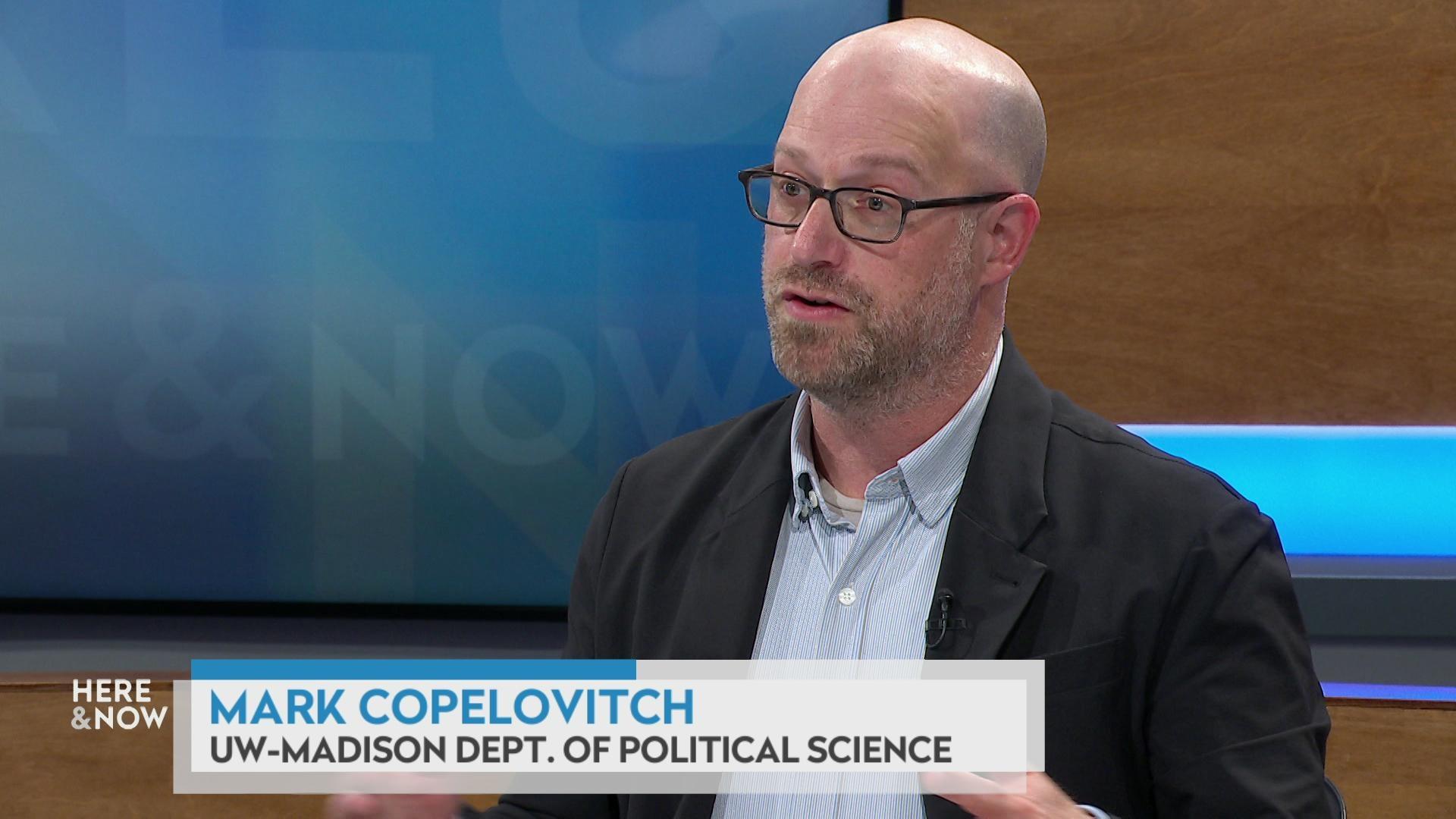Frederica Freyberg:
In tonight’s look ahead, a new economic analysis of the costs and benefits of the Foxconn deal in Wisconsin shows the incentive package was so outsized even if the contract is renegotiated, Wisconsin will still be on the losing end, potentially to the tune of costing the state $290,000 per job created. The state Department of Administration requested the study because the size and scope of the facility has changed since Foxconn promised a $10 billion investment and 13,000 jobs from flat panel screen production in Racine County. The company stands by its original promise for jobs, but Governor Evers has said the plant would employ only 1500 people by next year. We check in now with the author of the study, senior economist with W.E. Upjohn Institute for Employment Research Timothy Bartik. He joins us from Kalamazoo, Michigan. Thanks very much for being here.
Timothy Bartik:
Thanks for having me.
Frederica Freyberg:
How is it if the Foxconn deal is renegotiated it actually gets worse for Wisconsin taxpayers, that $290,000 per job created?
Timothy Bartik:
Well, if you have a new contract but you use the same credit rates, the cost per job actually can go up because the discussion now is that the new project with fewer jobs will be more capital intensive. It will have a higher ratio of robots to workers. And part of the credits is an investment tax credit so would end up actually being a higher credit rate per worker. Originally it was over $170,000 per job. Now we’re talking about something that might be as much, as you mentioned, $290,000 per job.
Frederica Freyberg:
So what kind of renegotiation would help level the cost benefit ratio here?
Timothy Bartik:
Well, I think the state should explore looking at lowering the cost per job to what is more normal in the U.S. which is somewhere between $20,000 and $30,000 per job. Even the Amazon New York deal was only about $40,000 per job. When the Foxconn deal was originally announced, people who analyze economic incentives around the country were kind of freaked out by the whole thing because it’s so far outside what we usually see in economic development. It’s at least six to seven times typical incentives. It’s even much greater than what the incentives offered to Amazon by New York.
Frederica Freyberg:
According to your analysis, under best-case scenarios for a renegotiated deal, how much could Wisconsin save?
Timothy Bartik:
Oh, well, you could save an awful lot. You could go — as I said, you could go from maybe $290,000 per job to down to $25,000 per job and then the deal might actually pay off for Wisconsin residents. The problem in paying so much per job, it’s not that new jobs aren’t worth something. They are worth something. They raise employment to population ratios. They bring in some tax revenue. But there are economic costs to these things too. You have to pay for these things. They come out of the state budget somewhere. And whether or not you raise taxes on households or raise taxes on other Wisconsin businesses or cut spending, cut public school spending, cut university spending, there’s an economic cost to that. There’s not a free lunch.
Frederica Freyberg:
Implications all around either way.
Timothy Bartik:
Right. I mean, basically, you know, creating jobs is valuable. And states are actively engaged in this. We need to think about what are the best ways to create jobs. Do we need to offer tax incentives? Do we need to offer businesses various types of services? Customized job training, manufacturing extension services, small business development centers, small business incubators. All these things cost money. Some of them are more effective than others. If you spend a huge amount per job, if you end up spending $290,000 per job, it’s very hard to have that pay off because although there are benefits, you have to pay for the incentives and that ends up costing you more than the jobs are worth.
Frederica Freyberg:
So what is your response to the outgoing CEO of the Wisconsin Economic Development Corporation who disputes your numbers and says you make assumptions that could not occur under the existing performance-based contract, namely, that the company wouldn’t be eligible for jobs payments with 1500 or 1800 employees and that the company would default on the contract if it doesn’t have 5,850 jobs by the end of 2023?
Timothy Bartik:
I think it’s a weird defense of the Foxconn deal to say the best-case scenario is that the company defaults and we then claw back all the incentives and then we assume Foxconn still keeps all the jobs there. That’s kind of a weird best-case scenario, that somehow 1500 jobs are created, we pay out a huge amount upfront. We essentially provide Foxconn with a no-interest loan for a number of years. Then we go to court and try to claw that back. Is that going to occur legally or politically? Would that actually occur? That’s the best-case scenario. On the other hand, if for some reason all the jobs went away, we could still do that. We’d have a cost of making this no-interest loan and then we’d have no jobs in the end. There’s a variety of scenarios but claiming that defending a deal by saying that default is the best option for residents of Wisconsin is a somewhat strange defense of the deal.
Frederica Freyberg:
For its part, Foxconn says that you misread the important multiplier effect of economic development projects like theirs. Did you misread the multiplier effect?
Timothy Bartik:
I used the multipliers that were used by the various consulting firms that advised both Foxconn and the state and the likely multiplier. People always like to claim magic multipliers. If you assume a large enough multiplier, any incentive package can pay off. If you say, we think for every job directly created there’s going to be five, six, ten other jobs. But usually when people look hard at multipliers, it’s pretty hard to get multipliers much greater than two or three. You know, I assumed a multiplier between two and three, which was the multiplier assumed by the consulting firms that both the state and Foxconn relied on.
Frederica Freyberg:
All right. We leave it there. Thanks for talking with us about your analysis.
Timothy Bartik:
Thank you for having me again.
Search Episodes

Donate to sign up. Activate and sign in to Passport. It's that easy to help PBS Wisconsin serve your community through media that educates, inspires, and entertains.
Make your membership gift today
Only for new users: Activate Passport using your code or email address
Already a member?
Look up my account
Need some help? Go to FAQ or visit PBS Passport Help
Need help accessing PBS Wisconsin anywhere?

Online Access | Platform & Device Access | Cable or Satellite Access | Over-The-Air Access
Visit Access Guide
Need help accessing PBS Wisconsin anywhere?

Visit Our
Live TV Access Guide
Online AccessPlatform & Device Access
Cable or Satellite Access
Over-The-Air Access
Visit Access Guide
 Passport
Passport


















Follow Us